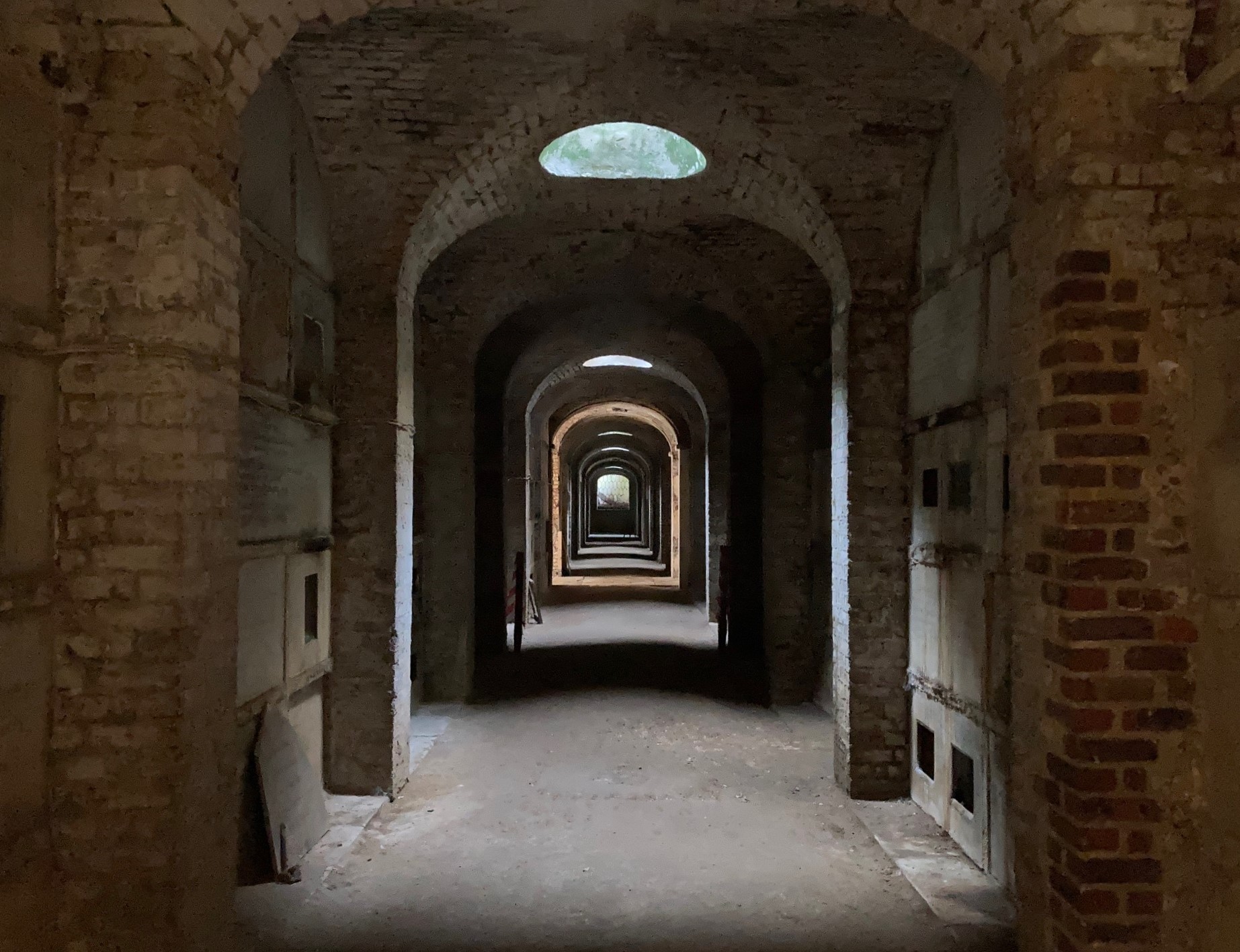Catacomb
 Inside the Terrace catacombs at Highgate cemetery, there is a brick-vaulted gallery that is naturally illuminated by oculi set in the terrace above. The spaces were used as both temporary and permanent resting places. Inside the Terrace catacombs at Highgate cemetery, there is a brick-vaulted gallery that is naturally illuminated by oculi set in the terrace above. The spaces were used as both temporary and permanent resting places.
|
The Penguin Dictionary of Architecture (third edition) was published in 1980. It was created for Penguin Reference and compiled by John Fleming, Hugh Honour and Nikolaus Pevsner. It defines a catacomb as: ‘An underground cemetery, sometimes on several levels, consisting of linked galleries and chambers with recesses for tombs (loculi).’
It is believed that the term catacomb was first used to describe a third century Christian underground burial chamber located outside Rome. During this period, it was illegal to bury the dead within the walls of the city.
This manner of burial was used in other parts of Italy, where a tradition of fresco painting on catacomb walls emerged as an early form of Christian art. Carvings also decorate the walls in some instances.
Catacombs fell out of fashion before the sixth century, but they became more popular again in the 1700s, when subterranean building was common in many parts of the world.
Some noteworthy examples include:
- San Gennaro catacombs in Naples.
- Paris catacombs (which hold the bones of more than six million people and was used by the French Resistance during the Second World war).
- Odessa catacombs (which were used for mining not for burial purposes).
London has its own catacombs, including those of Highgate Cemetery. These brick vaulted structures - referred to as the Terrace catacombs - are believed to be one of the earliest examples of asphalted construction in England.
|
These are some of the coffins stored in the recesses of Highgate cemetery's catacombs. |
Dating from the 1830s, this structure has separate recesses for 825 coffins, including one for the British surgeon, Robert Liston. Liston specialised in amputations and introduced the use of anaesthesia - outside the United States - for operations.
[edit] Related articles on Designing Buildings
Featured articles and news
RTPI leader to become new CIOB Chief Executive Officer
Dr Victoria Hills MRTPI, FICE to take over after Caroline Gumble’s departure.
Social and affordable housing, a long term plan for delivery
The “Delivering a Decade of Renewal for Social and Affordable Housing” strategy sets out future path.
A change to adoptive architecture
Effects of global weather warming on architectural detailing, material choice and human interaction.
The proposed publicly owned and backed subsidiary of Homes England, to facilitate new homes.
How big is the problem and what can we do to mitigate the effects?
Overheating guidance and tools for building designers
A number of cool guides to help with the heat.
The UK's Modern Industrial Strategy: A 10 year plan
Previous consultation criticism, current key elements and general support with some persisting reservations.
Building Safety Regulator reforms
New roles, new staff and a new fast track service pave the way for a single construction regulator.
Architectural Technologist CPDs and Communications
CIAT CPD… and how you can do it!
Cooling centres and cool spaces
Managing extreme heat in cities by directing the public to places for heat stress relief and water sources.
Winter gardens: A brief history and warm variations
Extending the season with glass in different forms and terms.
Restoring Great Yarmouth's Winter Gardens
Transforming one of the least sustainable constructions imaginable.
Construction Skills Mission Board launch sector drive
Newly formed government and industry collaboration set strategy for recruiting an additional 100,000 construction workers a year.
New Architects Code comes into effect in September 2025
ARB Architects Code of Conduct and Practice available with ongoing consultation regarding guidance.
Welsh Skills Body (Medr) launches ambitious plan
The new skills body brings together funding and regulation of tertiary education and research for the devolved nation.
Paul Gandy FCIOB announced as next CIOB President
Former Tilbury Douglas CEO takes helm.
UK Infrastructure: A 10 Year Strategy. In brief with reactions
With the National Infrastructure and Service Transformation Authority (NISTA).























